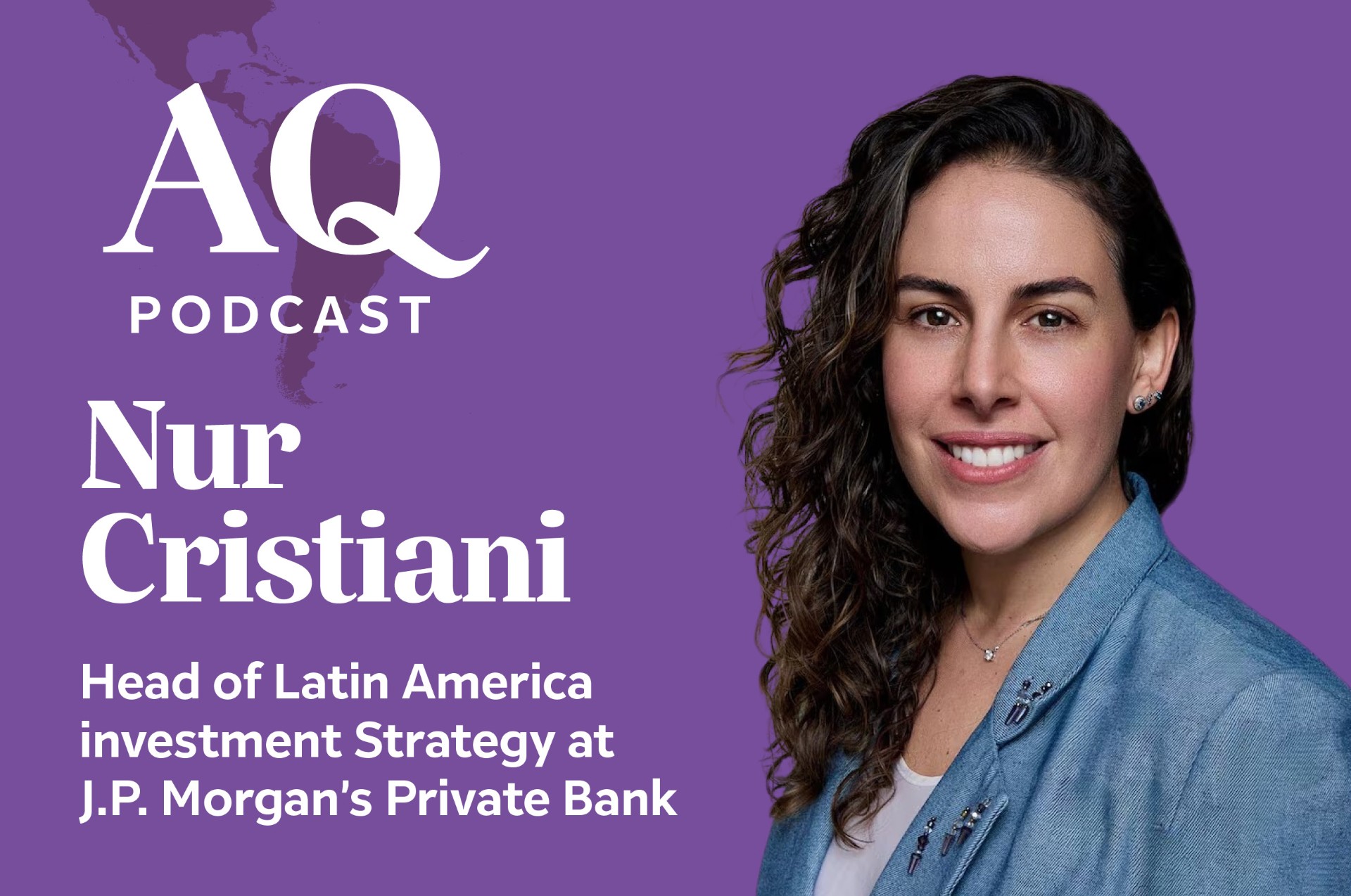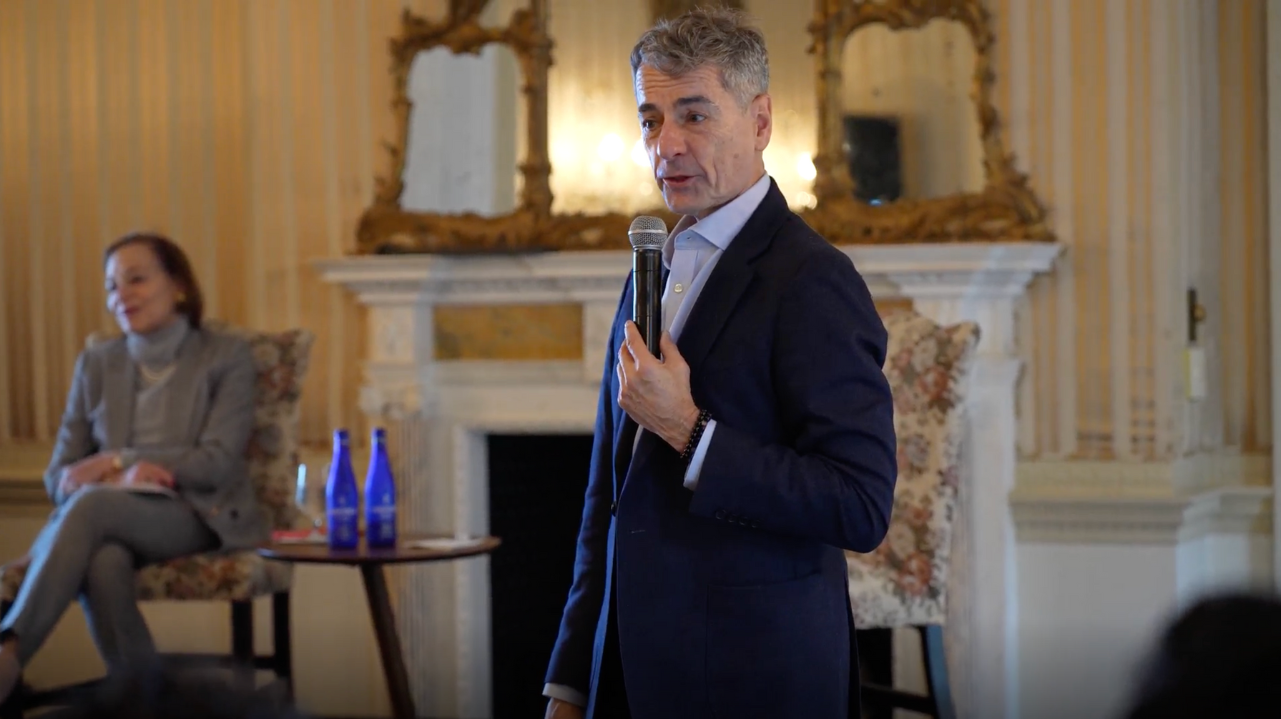6th Annual Latin America Predictors Forum
6th Annual Latin America Predictors Forum
This year’s forum explored how the region is emerging from the global recession. Panelists looked at prospects for trade and business in the coming year.
Speakers:
- Eric Fransworth, Vice President, Americas Society/Council of the Americas
- Kathryn G. Rooney, Senior Emerging Markets Macroeconomic Strategist, Bulltick Capital Markets
- Roberto Sifon-Arevalo, Director, Latin America Sovereign Ratings Group, Standard & Poor’s
- Juan Vasquez, Deputy Opinion Page Editor, The Miami Herald (moderator)
Summary
On December 4, 2009, the Americas Society/Council of the Americas held their 6th Annual Latin America Predictors Forum in Miami, focusing on economic, business, and trade prospects for the region in the upcoming year. Discussion centered on how Latin America has emerged from the economic turmoil, the top performers for the region, and whether there will be any movement in the U.S. trade agenda.
Economic outlook for Latin America
Bulltick’s Kathryn Rooney stressed that we can expect a much different year for Latin America in 2010—one that will be generally positive given the massive outperformance of emerging markets. She predicts a 4 percent average growth across the region in 2010 with only 2.5 percent growth in the developed world. Roberto Sifon-Arevalo of Standard & Poor’s (S&P) agrees that the outlook is stable for most of Latin America but gives a more cautious estimate of 3 percent overall growth in Latin America and 1.9 percent in the United States. Though financial risk is high and aversion low, Rooney expects the economies of the region to remain strong. She predicted that returns across the region will remain low and that 2010 will be a carry-trade year.
On the policy side, Sifon-Arevalo added that Latin American governments have learned from past mistakes and brought in more conservative debt structures, which will contribute to higher ratings for these economies. Both he and Rooney also congratulated the region’s central banks for improving monetary policy to lessen the shocks to the system and projected that such changes will continue in 2010. Rooney emphasized that the recent economic crisis is much different from prior ones because it will not be solved by a consumer rebound in the United States. Instead, China will drive the transformation, placing emerging markets in a unique position for next year.
A comparative view of the region
Much conversation on the region’s growth centers on the larger markets of Brazil and Mexico. Brazil’s economy remained strong in 2009 and growth rate forecasts for next year run at 4.5 or 5 percent, according to Sifon-Arevalo and Rooney respectively. But Rooney cautioned that investors have experienced a kind of euphoria in Brazil. She warned that they should not take on too much risk; the market may be too aggressive in predicting rate hikes in Brazil across the region. In fact, Bulltick recommends short on Bovespa but long on the Mexican Bolsa.
As for Mexico, many have said that the economy was hit by a perfect storm of crises this year: impact from the U.S. recession, the H1N1 scare, tourism collapse, and ongoing security concerns. But Rooney believes these factors will have less of an impact in 2010 allowing the economy to grow at 4 percent or 4.5 percent. She adds that the Mexican peso is the only undervalued currency in the region and that it will have a tremendous upside next year. Sifon-Arevalo is less positive on Mexico and puts the country’s growth rate at 2.5 percent.
In Central America and the Caribbean, remittances are not predicted to change much and the outlook is less positive. In Costa Rica and Panama, finances and debt levels have been modest. As a result, tourism may improve in those countries, which will continue to be easily financed. But we will see limited growth in Central America given its strong links to the dollar. El Salvador, for instance, is poorly ranked by S&P due to a lack of liquidity. Sifon-Arevalo said the Caribbean can expect another tough year as well. Jamaica, another underperformer in the region, is stuck in a cycle of debt and the IMF plan for the country has stalled. The region is also highly dependent on tourism, which took a hard hit in the crisis and will not completely rebound next year.
In the Southern Cone, Chilean elections may lead to new faces and changes in policy. As for Argentina, political risk ranks this country among the lowest of S&P ratings in the region. Sifon-Arevalo argued that Argentina needs more capital access, but predicts that the country will not default. Though it is trading at stressed levels, it is not a stressed country.
Overall, Sifon-Arevalo argues that many Latin American countries are too dependent on foreign direct investment but that Brazil and Colombia, with their strong capital markets, will rebound faster and offer more investment security. During a liquidity crunch, it certainly helps not to have to go looking for money in New York, he said. Rooney agreed and says the underperformers in the region next year will be Ecuador, Argentina, and Venezuela—mostly due to the lack of a strong local market. On the other hand, Peru has been a star performer in 2009 and is expected to continue positive growth at 4.5 percent next year. But strong commodity prices are the driving force of the economy, not capital markets. Outside of Peru, the Andean region’s performance looks flat. Venezuela and Ecuador are two of the lowest ranked countries by S&P. Even with its strong capital markets, Colombia is complicated to make prediction about due to the upcoming presidential election. Given elections across the region, Sifon-Arevalo expects the expansion of fiscal policies to increase because most presidents won’t be afraid to spend when seeking reelection: politically, this is easy to justify.
No tangible movement on trade
AS/COA’s Eric Farnsworth addressed the U.S. trade agenda for the region, including a Washington perspective on how the topic is being framed. He stressed that, with unemployment rising above 10 percent and predicted to remain high until 2012, the government has been focused on policies targeting job creation. President Barack Obama’s December 3 job summit did not mention trade once, and the fact that the high-level conversation to stimulate the U.S. economy has excluded this element is not a good sign for moving forward with pending trade agreements.
According to Farnsworth, the U.S. public will suffer if we do not competitively engage in trade and we need to be aggressive to compete with the other major economies. However, given that the healthcare debate and the war in Afghanistan have preoccupied the administration, trade fell off the agenda in Washington. Opponents associate free trade with job destruction and this year’s trade conversations have revolved mostly around domestic-producer issues or protectionism.
Farnsworth does not believe that the North American Free-Trade Agreement (NAFTA) will be up for renegotiation. Still, he stressed that NAFTA is a living document that was cutting edge 15 years ago when it was negotiated and now in need of changes.
In the same vein, the White House is moving toward trade policy that is sensitive to human and labor rights, the environment, and opening markets. Given this focus on defining the shape of free trade deals to make future agreements more sustainable, Farnsworth does not believe the Panama or Colombia FTAs will pass in 2010. He did, however, outline one potential bright spot in this discussion: the Trans-Pacific Partnership. The partnership is still in early stages, but, with the United States slated to host 2011 Asia-Pacific Economic Cooperation negotiations, this would be a prime opportunity to reengage other counties on trade.








